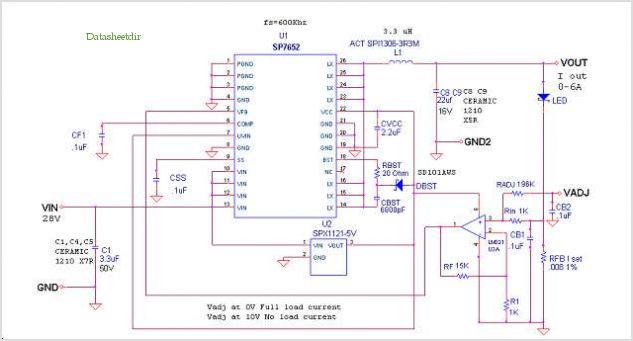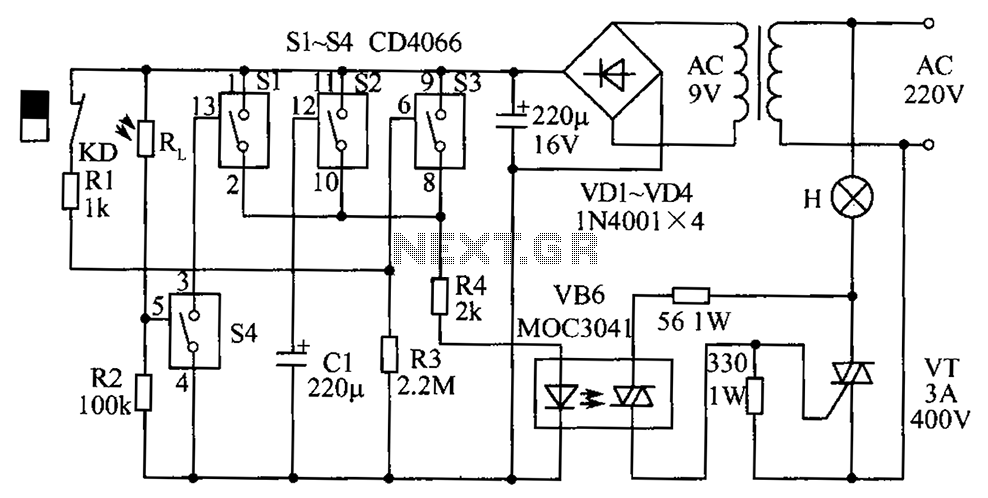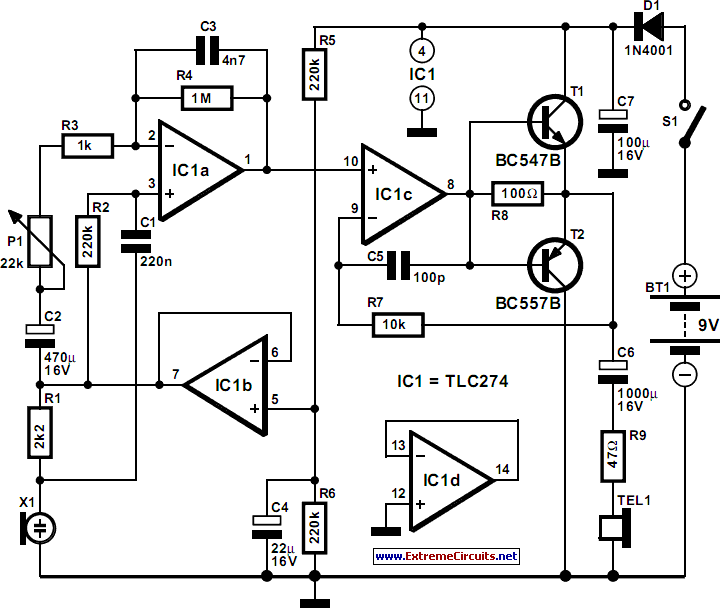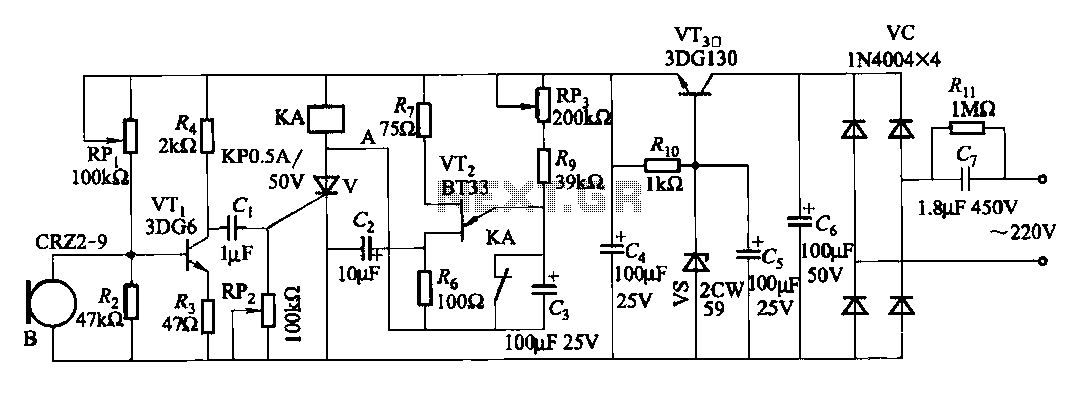
Model Theatre Lighting Dimmer
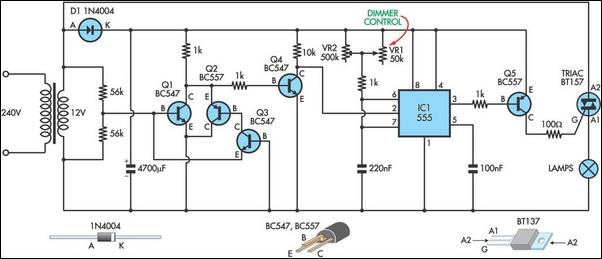
This circuit serves as the foundation for the dimmers in a model theatre lighting system that utilizes touch globes as the light source. The circuit is centered around a 55.
This circuit design incorporates a dimmer functionality specifically tailored for a model theatre lighting system, employing touch globes as the primary illumination source. The core component of the circuit is a 55, which likely refers to a specific integrated circuit or component number that is pivotal in regulating the voltage and current supplied to the touch globes.
The dimming feature is achieved through a pulse-width modulation (PWM) technique or a phase-cut dimming method, depending on the specific implementation of the circuit. This allows for smooth transitions in brightness levels, accommodating various theatrical scenarios and enhancing the overall visual experience.
The circuit may include additional elements such as resistors, capacitors, and possibly transistors to manage the current flow and ensure stable operation. A microcontroller could also be integrated to provide advanced control features, such as remote dimming capabilities or programmable lighting sequences.
Power supply considerations are critical, as the circuit must handle the input voltage and current requirements of the touch globes while maintaining safety and efficiency. Proper heat dissipation methods, such as heat sinks or thermal management strategies, should be implemented to prevent overheating of components during prolonged use.
Overall, this circuit is designed to provide reliable and adjustable lighting control, making it an essential part of the model theatre's lighting system, enhancing both functionality and aesthetic appeal.This circuit is the basis for the dimmers in a model theatre lighting system which uses touch globes as the light source. The circuit is based around a 55.. 🔗 External reference
This circuit design incorporates a dimmer functionality specifically tailored for a model theatre lighting system, employing touch globes as the primary illumination source. The core component of the circuit is a 55, which likely refers to a specific integrated circuit or component number that is pivotal in regulating the voltage and current supplied to the touch globes.
The dimming feature is achieved through a pulse-width modulation (PWM) technique or a phase-cut dimming method, depending on the specific implementation of the circuit. This allows for smooth transitions in brightness levels, accommodating various theatrical scenarios and enhancing the overall visual experience.
The circuit may include additional elements such as resistors, capacitors, and possibly transistors to manage the current flow and ensure stable operation. A microcontroller could also be integrated to provide advanced control features, such as remote dimming capabilities or programmable lighting sequences.
Power supply considerations are critical, as the circuit must handle the input voltage and current requirements of the touch globes while maintaining safety and efficiency. Proper heat dissipation methods, such as heat sinks or thermal management strategies, should be implemented to prevent overheating of components during prolonged use.
Overall, this circuit is designed to provide reliable and adjustable lighting control, making it an essential part of the model theatre's lighting system, enhancing both functionality and aesthetic appeal.This circuit is the basis for the dimmers in a model theatre lighting system which uses touch globes as the light source. The circuit is based around a 55.. 🔗 External reference
